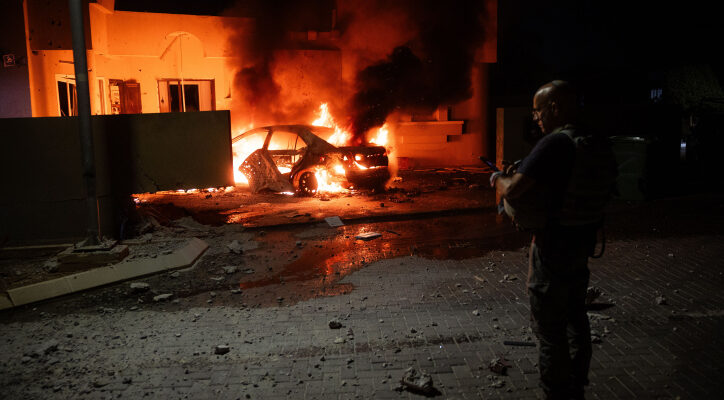Honest Reporting points out the suspicious timing of journalist Yousef Masoud’s arrival during the Hamas invasion.
By Vered Weiss, World Israel News
A photojournalist for the New York Times who allegedly infiltrated into Israel on October 7th was awarded a prestigious Polk Award for “delving into every angle of the conflict with unflinching eyes.”
However, Honest Reporting points out the suspicious timing of journalist Yousef Masoud’s arrival during the Hamas invasion.
Masoud, who was given the Polk Award for photojournalism along with journalist Samar Abu Elouf, said he was on the scene so early because he was awakened at 5:30 am by the sound of rockets.
However, Hamas didn’t start firing missiles into Israel until an hour later at 6:30 am.
Among the other photos Masoud took of Hamas terrorists and their victims on October 7th was a picture of terrorists sitting atop an Israeli tank and waving a Palestinian flag.
Masoud’s name was listed among other journalists who were the subject of Honest Reporting‘s investigative report revealing that several journalists working for The New York Times, AP, Reuters, and CNN may have had prior knowledge of the Hamas terror attacks and may have met up with Hamas members while they were committing atrocities.
In response to the investigative report and criticism from Israeli officials, the news outlets denied that their organizations had prior knowledge of Hamas’s plans to invade Israel.
Today, @nytimes is celebrating Yousef Masoud's prestigious Polk Award for his photojournalism.https://t.co/4xaqK94iPR
Reminder: Masoud didn't only photograph the conflict "from its opening hours on Oct. 7" – he infiltrated Israel's border from Gaza that very morning.
Questions… pic.twitter.com/OIrmg2rBbm
— HonestReporting (@HonestReporting) February 20, 2024
The New York Times lashed out at Honest Reporting and claimed the organization was making “vague allegations” and praised Yousef Masoud as “doing important work for us.”
Greg Winter, International managing editor of The New York Times also praised Masoud’s work.
He said Masoud deserved the Polk award for “chronicling Israel’s bombardment and invasion of their homeland, Gaza.”
Winter continued, “Under harrowing circumstances, they captured gripping and unforgettable images. Of frightened children looking skyward toward an Israeli plane. Of bodies pulled from the rubble of flattened buildings. Of a little boy touching the bloodied face of his dead baby sister. And of the chaos of hospitals overwhelmed by dazed, gravely injured patients.”
Winter concluded, “This was easily one of the most contentious, polarizing stories in decades, yet our journalists in Israel, Gaza, and around the world stay focused on delving into every angle of the conflict with unflinching eyes.”




